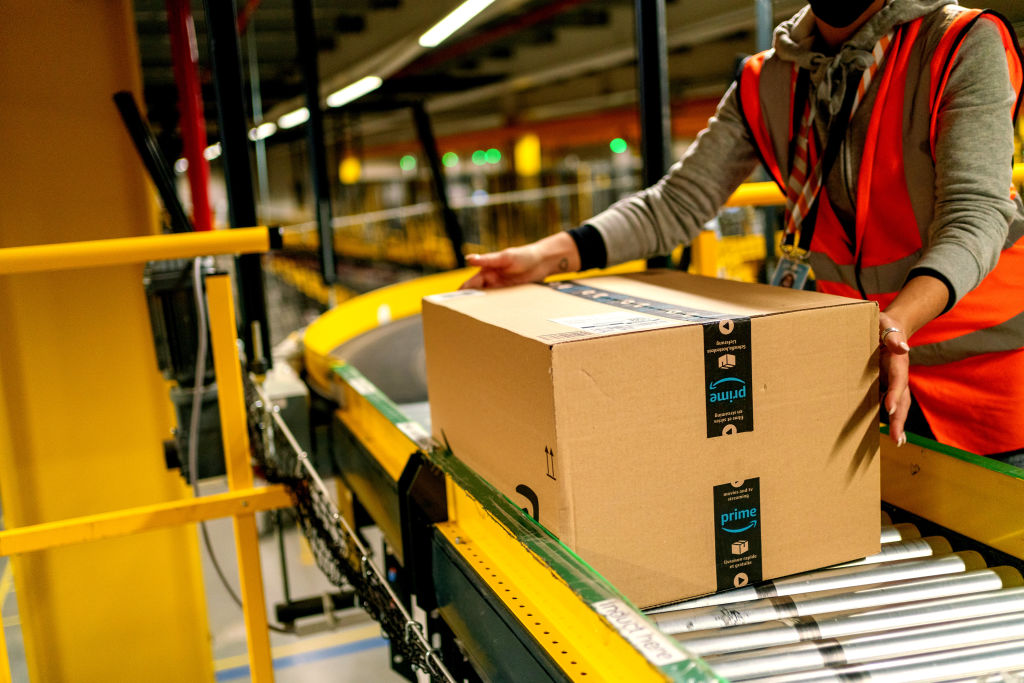Put Your 5G Upgrade on Pause
Don’t get your hopes up too soon. Widespread rollout of the faster wireless service could take years.

By now, you’ve probably heard about the promise of fifth-generation wireless, or 5G, with speeds up to 100 times faster than current networks. But don’t give up your 4G phone just yet. The transition to widely available 5G could stretch for as long as a decade. Even some mobile providers say the rollout will take three or four years, and that prediction is “absolutely optimistic,” says Dan Hays, a telecom principal with PwC US.
Blame physics: 5G data requires dense, higher-frequency radio waves to deliver its blazing speed. But the higher the wave frequency, the shorter the distance it can travel before petering out.
While a 4G tower can broadcast a signal for miles, a 5G tower’s range is about 1,000 feet. “You could have 5G available right outside your building but not have it down the block or inside your building,” Hays says.
From just $107.88 $24.99 for Kiplinger Personal Finance
Become a smarter, better informed investor. Subscribe from just $107.88 $24.99, plus get up to 4 Special Issues

Sign up for Kiplinger’s Free Newsletters
Profit and prosper with the best of expert advice on investing, taxes, retirement, personal finance and more - straight to your e-mail.
Profit and prosper with the best of expert advice - straight to your e-mail.
Before a city can adopt 5G wireless, it will need a lot of antennas, both outside and inside our homes. (Imagine 5G poles lining city blocks and router-like boxes in your kitchen.)
Most cities will also need to install miles of fiber-optic internet cable to support full 5G, a capital-intensive upgrade for most of the country’s existing broadband network.
Compared with the transition to 4G, “5G infrastructure is a fundamentally different challenge,” says Ernesto Falcon, of the Electronic Frontier Foundation. “It’s hundreds of billions of dollars of investment.”
Profit and prosper with the best of Kiplinger's advice on investing, taxes, retirement, personal finance and much more. Delivered daily. Enter your email in the box and click Sign Me Up.

-
 How to Safely Open an Online Savings Account
How to Safely Open an Online Savings AccountOnline banks offer generous APYs that most brick-and-mortar banks can't match. If you want to make the switch to online but have been hesitant, I'll show you how to do it safely.
-
 7 Ways to Age Gracefully Like the Best Stock Photo Seniors
7 Ways to Age Gracefully Like the Best Stock Photo SeniorsAs a retirement editor, I've gleaned valuable wisdom (and a lot of laughs) from one older couple that tops the seniors' stock photo charts.
-
 My First $1 Million: Banking Executive, 48, Southeast U.S.
My First $1 Million: Banking Executive, 48, Southeast U.S.Ever wonder how someone who's made a million dollars or more did it? Kiplinger's My First $1 Million series uncovers the answers.
-
 9 Types of Insurance You Probably Don't Need
9 Types of Insurance You Probably Don't NeedFinancial Planning If you're paying for these types of insurance, you may be wasting your money. Here's what you need to know.
-
 When Tech is Too Much
When Tech is Too MuchOur Kiplinger Retirement Report editor, David Crook, sounds off on the everyday annoyances of technology.
-
 I Let AI Read Privacy Policies for Me. Here's What I Learned
I Let AI Read Privacy Policies for Me. Here's What I LearnedA reporter uses AI to review privacy policies, in an effort to better protect herself from fraud and scams.
-
 Amazon Resale: Where Amazon Prime Returns Become Your Online Bargains
Amazon Resale: Where Amazon Prime Returns Become Your Online BargainsFeature Amazon Resale products may have some imperfections, but that often leads to wildly discounted prices.
-
 What Is AI? Artificial Intelligence 101
What Is AI? Artificial Intelligence 101Artificial intelligence has sparked huge excitement among investors and businesses, but what exactly does the term mean?
-
 Roth IRA Contribution Limits for 2026
Roth IRA Contribution Limits for 2026Roth IRAs Roth IRAs allow you to save for retirement with after-tax dollars while you're working, and then withdraw those contributions and earnings tax-free when you retire. Here's a look at 2026 limits and income-based phaseouts.
-
 Four Tips for Renting Out Your Home on Airbnb
Four Tips for Renting Out Your Home on Airbnbreal estate Here's what you should know before listing your home on Airbnb.
-
 Five Ways to a Cheap Last-Minute Vacation
Five Ways to a Cheap Last-Minute VacationTravel It is possible to pull off a cheap last-minute vacation. Here are some tips to make it happen.